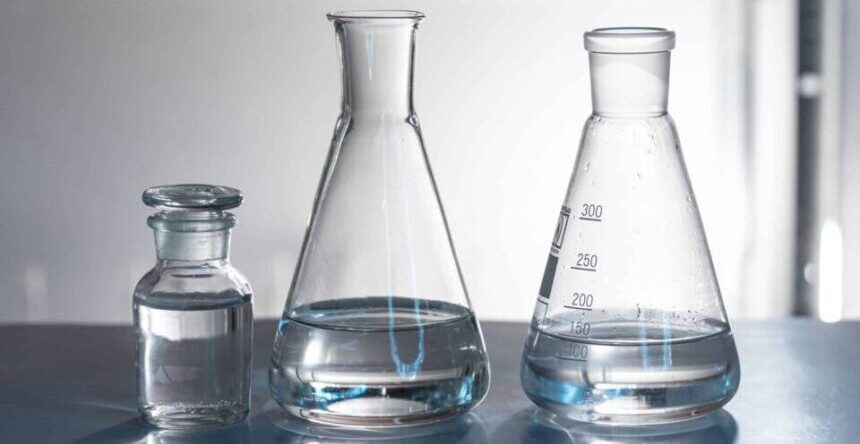Colloidal Silver Vs Ionic Silver: Understanding The Difference

Navigating the world of health supplements can be confusing, especially when choosing between colloidal and ionic silver. Both forms of silver are touted for their health benefits, but they differ significantly in composition and action.
This article demystifies these differences, guiding you toward an informed decision about which type may best suit your wellness journey. Discover the key facts and make a confident choice.
Key Takeaways
-
- Colloidal silver has tiny solid particles in a liquid, while ionic silver has atoms in the water.
-
- Both colloidal and ionic silver can fight bad bacteria, but they work differently inside your body.
-
- Knowing the size and purity of silver particles can help you decide which to use for health.
-
- Too much ionic or colloidal silver might be unsafe and turn your skin blue-gray.
-
- Some products say they have colloidal silver but have more ionic silver instead.
Understanding Colloidal Silver and Ionic Silver
Colloidal silver and ionic silver differ in their composition, with colloidal silver consisting of tiny solid particles suspended in a liquid. In contrast, ionic silver is typically dissolved in water as individual atoms or molecules.
These differences impact their properties, potential benefits, and use in various products.
Differences in composition and structure
Silver ion solutions, or ionic silver, comprise individual silver atoms that have lost an electron and carry a positive charge. These atoms float in water or another liquid.
They are not the same as colloidal silver, which has silver ions and tiny solid particles of silver called nanoparticles. These nanoparticles hang mixed in water, forming a colloid.
The structure of these two forms is key to how they act. Ionic silver mixes fully with water because it’s made of dissolved atoms. On the other hand, colloidal silver has particles too big to dissolve completely; they stay suspended in the liquid without settling down quickly at the bottom.
This makes them different from each other in how they work and what they can do for their health.
Properties and potential benefits
Colloidal and ionic silver fight against harmful bacteria, making them useful for health. They have tiny parts called nanoparticles that can attack microbes and stop them from growing.
This makes these silvers good to use in bandages and creams to help wounds heal. Silver solutions are also used in some machines that clean water.
People like using colloidal silver because it has particles that stay the same size and don’t easily join up with other things. This means it can work well inside our bodies without losing its power quickly.
However, you should know high amounts of any form of silver might not be safe over a long time. Ionic silver is different; it is more reactive and less effective when it meets other stuff inside you, like your stomach acid or blood.
Use in products
Silver products come in many forms. Some have colloidal silver, meaning tiny silver particles float in liquid. These particles kill bacteria and help with infections. Other products contain ionic silver solutions.
They release silver ions when they touch germs or your body’s moist surfaces.
People use these different silvers to stay healthy. They find them in lotions, sprays, and dietary supplements. It’s important to pick the right type for your desired health benefit.
Ionic solutions are often clear, while those with true colloids might look a bit cloudy because of the solid parts suspended inside.
Which is Better: Colloidal Silver or Ionic Silver?

When comparing colloidal silver and ionic silver, factors such as purity, particle size, and impact on biofilm and biocompatibility come into play. Understanding these differences can help individuals make informed decisions about which form of silver may be more suitable for their intended use.
Purity and particle size differences
Understanding the nuances between colloidal and ionic silver is critical for those seeking to enhance their health through silver supplements. Purity and particle size are two fundamental factors that significantly influence the behavior and effectiveness of silver in the body.
| Aspect | Colloidal Silver | Ionic Silver |
| Purity | Consists of minuscule particles of metallic silver | Composed of dissolved silver ions in liquid |
| Particle Size | Smaller nanoparticles can release more atoms due to high surface energy | Typically consists of even smaller entities, silver ions, which are readily absorbed |
| Absorption | Larger particles may be less easily absorbed than ions | High absorption rate due to the small size of silver ions |
| Stability | Tends to have a stable particle size over time | Stability can be affected by environmental factors such as light and electromagnetic fields |
| Surface Energy | Higher surface energy in smaller particles means increased reactivity | Lower surface energy as ions are already in a stable, dispersed state |
Selecting the correct type of silver is crucial for its intended use and effectiveness. Particle size plays a pivotal role in both colloidal and ionic forms. Smaller particles have higher surface energy and reactivity, which can affect the release of silver ions and subsequent absorption into the body. Understanding these differences aids in making informed decisions regarding health supplements.
Impact on biofilm and biocompatibility
Ionic silver at high concentrations has shown some effectiveness in combating in vitro biofilms, but this evidence lacks strong substantiation. On the other hand, silver nanoparticles within the size range of 10 to 15 nm demonstrate increased stability, biocompatibility, and enhanced antimicrobial properties.
Both silver ions and silver-based compounds exhibit potent biocidal effects on various micro-organisms such as bacteria, fungi, yeasts, and viruses.
Understanding the impact of these differences is essential for individuals seeking to make informed choices about health products utilizing colloidal or ionic silver. Considering each form’s potential benefits and risks is crucial when evaluating their use for improving overall health and well-being.
The Importance of Choosing the Right Silver
Factors such as purity, particle size, and PPM are crucial when selecting silver for health and wellness products. Understanding the differences between colloidal and ionic silver can help consumers choose the best option.
Factors to consider: purity, particle size, and PPM
When choosing silver products for health and wellness, consider the following factors:
- Purity: Ensure the silver product is high purity to minimize potential impurities and maximize its effectiveness.
- Particle Size: Smaller particle size allows for greater surface area, enhancing the reactivity and bioavailability of the silver product.
- Parts Per Million (PPM): The concentration of silver in the product can affect its potency and potential impact on the body’s systems.
Potential risks of using ionic silver
Although marketed as a dietary supplement, Ionic silver can pose potential risks to human health. When consumed excessively, ionic silver can lead to argyria, turning the skin blue-gray.
This discoloration occurs when silver particles deposit in various body organs, causing cosmetic concerns and potential harm.
Furthermore, ionic silver nanoparticles are highly reactive and can travel throughout the body. Their small size allows them to be deposited in a wide range of organs, potentially causing adverse effects on overall health.
Understanding the differences between colloidal and ionic silver can help people make informed choices about their use in health and wellness products.
Understanding the differences between colloidal and ionic silver is crucial for making informed choices about their use in health and wellness products. Colloidal silver consists of tiny particles suspended in a liquid, whereas ionic silver contains only silver ions dissolved in the solution.
The behavior and impact on biofilm and biocompatibility of these two forms of silver differ due to their composition.
The purity, particle size, and parts per million (PPM) should be considered when selecting a silver product. Ionic silver solutions are not true colloids, as they do not contain solid particles but only dissolved ions.
Research has shown that some commercial colloidal silver products primarily consist of ionic silver, highlighting the need for consumers to understand these differences for effective decision-making regarding using such products for their health needs.
FAQs
Q: What is the difference between colloidal silver and ionic silver?
A: Colloidal silver consists of silver nanoparticles suspended in a liquid, while ionic silver solutions contain silver ions dissolved in water.
Q: How are silver and colloidal silver different from each other?
A: Silver is the elemental form of the metal, while colloidal silver is a suspension of silver nanoparticles in a liquid.
Q: Are there any differences between ionic silver and colloidal silver products on the market?
A: Yes, ionic silver solutions are typically clear, while colloidal silver solutions are not transparent.
Q: How do silver and colloidal silver affect the human body?
A: Both silver and colloidal silver have been used for their antimicrobial properties, with colloidal silver often marketed as a bacteriostatic agent.
Q: What does it mean when silver is called a colloidal suspension?
A: Silver nanoparticles are suspended in a liquid without completely dissolving or settling at the bottom of the container.
Q: Can you explain the difference between silver and colloidal silver?
A: Silver is the elemental form of the metal, while colloidal silver refers to a suspension of silver nanoparticles in a liquid medium.
Q: Unlike colloidal silver, what does ionic silver contain?
A: Ionic silver solutions contain silver ions that are dissolved in a liquid rather than being in the form of suspended particles.
Q: What are the key characteristics of both ionic and colloidal silver?
A: Ionic silver solutions are typically clear, while colloidal silver solutions can be found in a range of colors, depending on the size and shape of the silver nanoparticles.
Q: How has silver been historically used for its antimicrobial properties?
A: Silver has been used for its antimicrobial properties for centuries and is known for its ability to inhibit the growth of microorganisms.
Q: What have scientists discovered about ionic silver and its properties?
A: Scientists have found that ionic silver can be deposited in a wide range of tissues and has bactericidal effects, which are different from the bacteriostatic effects associated with colloidal silver.

